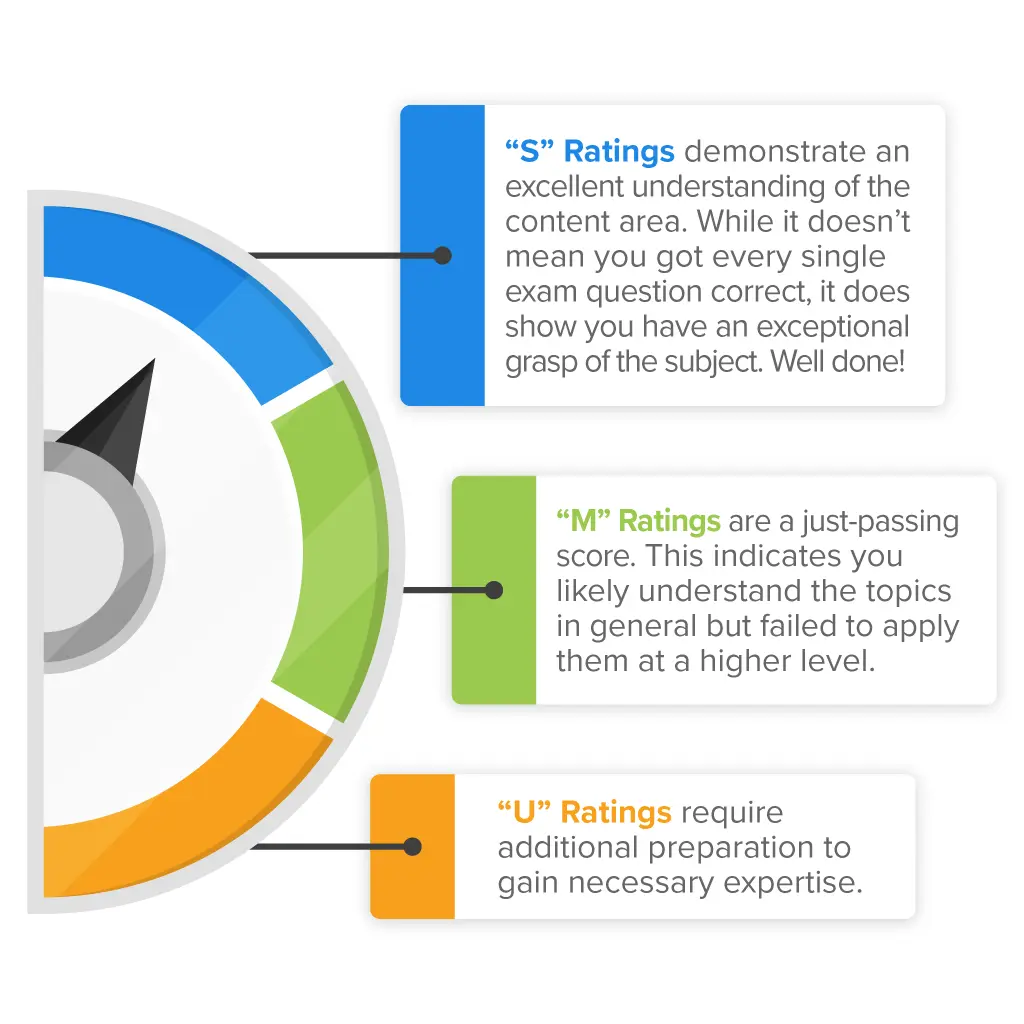It’s no secret that the Certified Management Accountant (CMA) exam is as challenging as it is globally respected. With hours of reviewing forecasting techniques and costing systems ahead, you’ll want to buckle up for the CMA exam journey. But while you’re deep in study mode, it’s easy to overlook a few important details: the CMA exam pass rates and what they actually mean.
Let’s examine the numbers, why they matter, and how a strategic, realistic study approach can turn those stats in your favor.
What Are the CMA Exam Pass Rates?
The global CMA pass rate typically falls between 45% and 50%, depending on the part of the exam and the testing region. That may seem low at first glance, but it’s by design.1
| CMA Exam Part | Topics Covered | Pass Rate |
|---|---|---|
| Part 1 | Financial reporting, planning, budgeting, performance management, cost management, internal controls, and technology & analytics | 45-50% |
| Part 2 | Financial statement analysis, corporate finance, decision analysis, risk management, investment decisions, and professional ethics | 50-55% |
Part 1 tends to be more technical, which may explain its lower pass rate. Part 2 emphasizes strategic financial management and often aligns more closely with the real-world experience of working professionals, leading to a slightly higher pass rate. Ultimately, the difficulty of each part depends on your background — whether it’s rooted in accounting, finance, or a blend of both.2
Remember that the CMA exam is built to assess your analytical ability, financial acumen, and decision-making skills at a professional level. This credential isn’t meant to be easy — it’s meant to be earned.
The CMA Exam Scoring Scale
Each CMA exam part is scored on a scale from 0 to 500. A score of 360 or above is required to pass. This is called a scaled score, which adjusts for variations in exam difficulty across different test forms. Your score reflects the number of correct answers and the relative difficulty of your specific exam version.
The takeaway? Don’t think of it as a percentage of correct answers. Instead, think of it as a benchmark for proficiency.
What Is the CMA Exam Performance Rating Scale?
If you don’t pass a particular part of the CMA exam, you’ll receive a performance report within 2 weeks of receiving your results. This breakdown gives a general assessment of your proficiency in each content area and the essay section, using the following ratings:
These insights can be incredibly valuable because they tell you exactly where to focus your efforts if you need to retake a part of the exam. Consider your report as your personalized guide to targeted study. With a better glimpse into your performance metrics, you’ll be 1 step closer to your goal: conquering the exam and earning those coveted 3 letters.
Historical Trends in CMA Pass Rates
Before 2020, global CMA exam pass rates hovered around 35% for Part 1 and around 45% for Part 2. But as enhanced exam prep and a more flexible testing model emerged, pass rates for both parts improved to the 45-50% stat we see today. That rate is expected to climb — especially with driven candidates like you who are curious about optimizing their study plans.2
How Do You Really Pass the CMA Exam?
If fewer than half of all candidates pass the CMA exam on their first attempt, does that mean it’s too difficult? Not at all. The pass rate just underscores the need for preparation — not perfection. With the right study tools, time management, and feedback loops, you can absolutely succeed.
Whether you’re prepping for your first attempt or a retake, here are proven strategies to help you increase your CMA success rate:
1. When in Doubt, Plan It Out
Beware of procrastination, cramming, and guesswork. Be intentional about your timeline and start your studies with purpose. Our dynamic study planner makes it easy by breaking content into weekly chunks that align with your exam date.
2. Practice, Practice, and Practice Some More
You’ve heard it a million times: Study smarter, not harder. Our in-house team of CMAs has already done the hard work by crafting thousands of realistic practice questions to build mastery beyond the exam. Now it’s your turn to put them into practice.
3. Build Strength Where It Matters Most
The CMA exam will push you to your limits. If you don’t pass the first time, don’t give up! Hone your skills with our full-length mock exams, and use our performance tracking to get the complete picture of your strengths and weaknesses. Those low-performing areas will be your priority. You’ll need to revisit content regularly to reinforce understanding.
Test for CMA Success
The CMA test pass rate may look intimidating, but remember that those numbers don’t define you — your preparation does.
With the right mindset, resources, and support, you can move from statistic to success story.
References
- Institute of Certified Management Accountants. (2020, May). ICMA releases pass rates for new CMA exam curriculum, offers flexibility in 2020 testing schedule. Institute of Management Accountants. https://www.imanet.org/press-releases/2020/may/icma-releases-pass-rates-for-new-cma-exam-curriculum-offers-flexibility-in-2020-testing-schedule
- Institute of Certified Management Accountants. (2025). CMA handbook: Your guide to information and requirements for CMA certification. https://www.imanet.org




